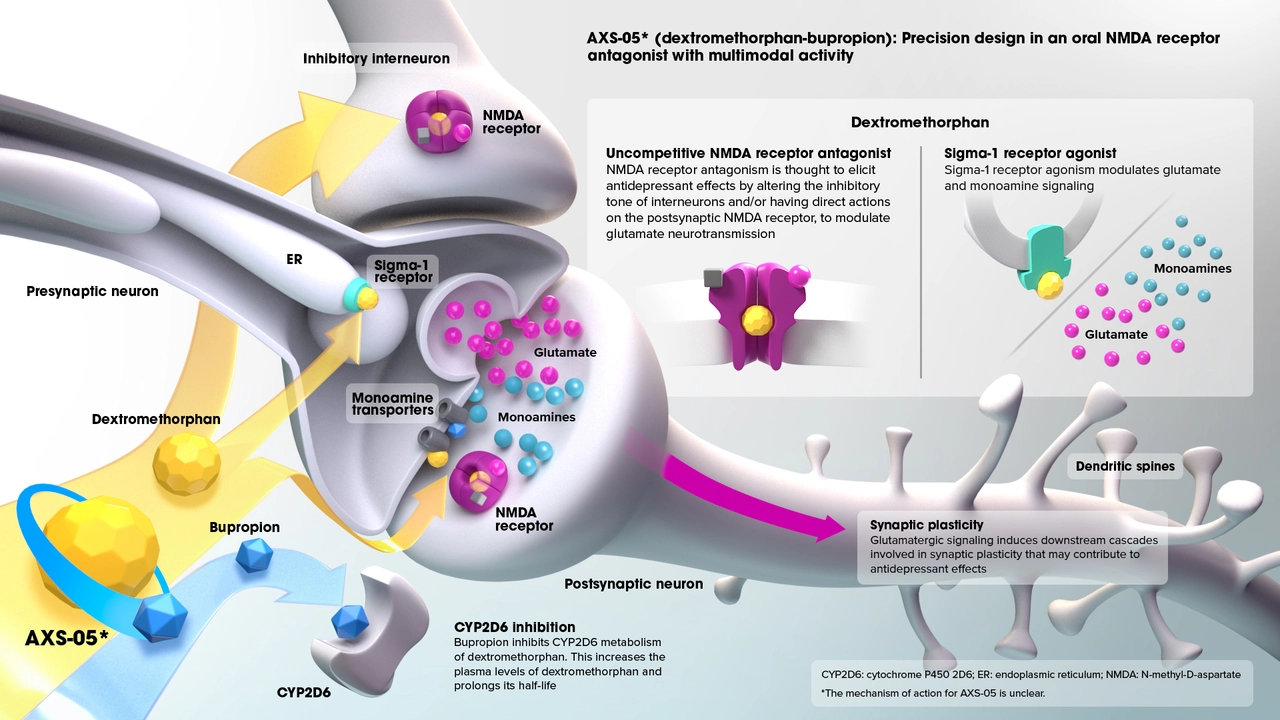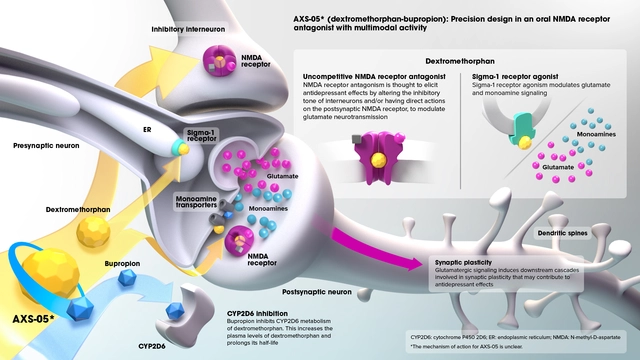Introduction to Dimethyl Fumarate
Dimethyl fumarate, or DMF, is a versatile compound with various applications in medicine, agriculture, and food processing. In this article, we will dive deep into the mechanism of action of dimethyl fumarate and explore how this fascinating compound works in different contexts. We will also discuss some of the current and potential uses of DMF in different industries.
Chemical Structure and Properties of Dimethyl Fumarate
Before we delve into the mechanism of action of DMF, let's take a quick look at its chemical structure and properties. Dimethyl fumarate is an ester derived from fumaric acid, with two methyl groups attached to the carboxylic acid groups. This gives DMF its unique chemical properties, which are central to its various applications. DMF is a white crystalline powder with a faint, fruity odor. It is soluble in water, alcohol, and other organic solvents, making it easy to incorporate into various formulations.
DMF as a Neuroprotective Agent in Multiple Sclerosis
One of the most notable applications of dimethyl fumarate is in the treatment of multiple sclerosis (MS), a debilitating neurological disease. The exact mechanism of action of DMF in MS is not completely understood, but it is known to involve both anti-inflammatory and neuroprotective effects. DMF is thought to activate the nuclear factor (erythroid-derived 2)-like 2 (Nrf2) pathway, which is crucial for the cellular response to oxidative stress, ultimately leading to the protection of neurons from damage.
Dimethyl Fumarate and the Nrf2 Pathway
The Nrf2 pathway plays a vital role in protecting cells from oxidative stress and inflammation. DMF is thought to activate this pathway by modifying specific cysteine residues in the Keap1 protein, which results in the release of Nrf2. Once released, Nrf2 moves into the cell nucleus and binds to the antioxidant response element (ARE), leading to the expression of various antioxidant and detoxification genes. This process helps protect neurons from the damaging effects of inflammation and oxidative stress, which are hallmarks of MS.
DMF as a Fungicide and Biocide in Agriculture and Food Processing
Dimethyl fumarate is also widely used as a fungicide and biocide in agriculture and food processing. DMF exhibits potent antimicrobial activity against various fungi and bacteria, making it a valuable tool for protecting crops from disease and ensuring food safety. The precise mechanism of action of DMF in this context is not well understood, but it is believed to involve the disruption of cellular processes and the induction of oxidative stress in target organisms.
Inhibition of Fungal Spore Germination and Mycelial Growth
One of the ways DMF exerts its fungicidal activity is by inhibiting the germination of fungal spores and the growth of mycelial structures. DMF is thought to interfere with the normal functioning of the fungal cell wall and membrane, leading to cellular leakage and ultimately cell death. In addition, DMF's ability to induce oxidative stress in target organisms may contribute to its antifungal effects.
DMF as a Mold Inhibitor in Leather and Textile Industries
Dimethyl fumarate is also used as a mold inhibitor in the leather and textile industries. DMF has been shown to prevent the growth of mold on leather goods and textiles, thus protecting these products from damage and increasing their shelf life. The mechanism of action of DMF in this context is likely similar to its antifungal activity in agriculture, involving the disruption of cellular processes and the induction of oxidative stress in mold spores.
DMF as a Potential Treatment for Psoriasis
In addition to its established uses, dimethyl fumarate is also being investigated as a potential treatment for psoriasis, a chronic inflammatory skin disease. The anti-inflammatory and immunomodulatory effects of DMF may be beneficial for patients with psoriasis by reducing the inflammation and hyperproliferation of skin cells that characterize the disease. More research is needed to fully understand the mechanism of action of DMF in this context and to determine its efficacy and safety in the treatment of psoriasis.
Conclusion: The Versatility of Dimethyl Fumarate
In conclusion, dimethyl fumarate is a versatile compound with a range of applications in medicine, agriculture, and industry. Its ability to modulate cellular processes and protect against oxidative stress and inflammation makes it a valuable tool for treating neurological diseases like multiple sclerosis, as well as for protecting crops and consumer goods from fungal and bacterial contamination. Ongoing research into the mechanism of action of DMF may reveal new applications for this fascinating compound and further our understanding of its therapeutic potential.









Comments
Kyah Chan
June 2, 2023The exposition fails to substantiate its assertions with rigorous empirical evidence, thereby compromising the scholarly integrity of the discourse.
Ira Andani Agustianingrum
June 5, 2023Great overview! I love how you highlighted the Nrf2 pathway and its relevance to neuroprotection. It’s refreshing to see such clarity, especially when discussing complex biochemistry. Keep up the good work, and consider adding a brief comparison with other fumarate derivatives to enrich the context.
James Higdon
June 8, 2023One must acknowledge that propagating unverified mechanisms without stringent peer review borders on scientific irresponsibility, and it is our duty to demand greater transparency in pharmacological claims.
Wanda Smith
June 11, 2023When we peer beneath the molecular veil, we confront the hidden architectures that shape perception itself; the very atoms of dimethyl fumarate may be orchestrated by unseen custodians to steer neuroimmune equilibrium, a fact obscured by the mainstream narrative that prefers comfort over truth.
Jaime Torres
June 14, 2023Honestly this reads like filler.
Shane Hall
June 18, 2023The mechanistic landscape of dimethyl fumarate (DMF) is indeed multifaceted, encompassing immunomodulatory, antioxidative, and antifungal dimensions.
The cell‑level action begins with DMF acting as an electrophile that modifies cysteine residues on Keap1, liberating Nrf2 from cytoplasmic sequestration.
Once free, Nrf2 translocates into the nucleus and binds antioxidant response elements (ARE), up‑regulating a battery of cytoprotective genes such as HMOX1, NQO1, and GCLC.
This transcriptional program heightens the cellular capacity to neutralize reactive oxygen species, a crucial benefit in multiple sclerosis where oxidative stress accelerates demyelination.
Moreover, DMF suppresses pro‑inflammatory cytokine production by dampening NF‑κB signaling, a pathway tightly linked to T‑cell activation and myelin injury.
The dual action-antioxidant induction and inflammatory attenuation-creates a synergistic milieu conducive to neuronal survival.
In agriculture, the same electrophilic character disrupts fungal cell‑wall synthesis by alkylating key enzymes, leading to leakage of cellular contents and eventual spore death.
Studies show exposure to sub‑lethal DMF concentrations precipitates malformed hyphae, underscoring its utility as a broad‑spectrum fungicide.
The oxidative burst induced in fungal cells mirrors the oxidative stress response in mammalian cells, albeit with lethal consequences for the pathogen.
Formulation‑wise, DMF’s solubility in water and organic solvents facilitates its incorporation into topical creams for psoriasis, where it can modulate keratinocyte proliferation.
Clinical trials in psoriasis have reported reduced PASI scores, suggesting that the Nrf2‑mediated antioxidant response translates into tangible therapeutic benefits.
Nonetheless, the metabolite monomethyl fumarate (MMF) also contributes to the pharmacodynamic profile, acting as a less potent but longer‑lasting activator of the same pathways.
Safety considerations remain paramount; the electrophilic nature of DMF can provoke lymphopenia in a subset of patients, necessitating regular blood monitoring.
Future research might explore targeted delivery systems that maximize central nervous system penetration while minimizing systemic exposure.
In summary, the versatility of DMF stems from its capacity to engage conserved redox‑sensing mechanisms across kingdoms, rendering it a unique bridge between medicine and agriculture.
Christopher Montenegro
June 21, 2023The presented mechanistic schema exhibits a conspicuous paucity of quantitative pharmacokinetic parameters, rendering the purported Nrf2 activation hypothesis speculative at best; such epistemic laxity undermines translational fidelity.
Lawrence Bergfeld
June 24, 2023Excellent synthesis-every key pathway is articulated clearly; the inclusion of both neuro‑protective and agronomic perspectives is commendable!
Chelsea Kerr
June 27, 2023Delving into the metaphysical underpinnings of oxidative stress reveals that DMF serves as both a sentinel and a catalyst in the cellular drama 🌟; its capacity to toggle redox homeostasis invites us to reconsider the binary of disease and health 🧠🍃.
Jai Patel
June 30, 2023Yo, the way DMF flips the switch on those stubborn fungi is straight up wizardry-think of it as the ultimate backstage pass to the cell’s power grid, and it’s doing it with style! 🎉
Kyle Olsen
July 4, 2023It is evident that the author has neglected to incorporate a comprehensive kinetic analysis, thereby rendering the discourse insufficiently rigorous; a thorough elucidation of Michaelis‑Menten parameters would have been indispensable.
Sarah Kherbouche
July 7, 2023Honestly this kinda sounds like some foreign lobby trying to push their own agenda, u know? We should be protectin our own meds not lettin outsiders dictate.
Zara @WSLab
July 10, 2023Really insightful! I’m curious about how the oxidative stress pathway might intersect with other cellular defenses 🌱💡.
Randy Pierson
July 13, 2023Spirited discourse! The interplay of electrophilic whispers and antioxidative choruses paints a vivid tableau of biochemical ballet.
Bridget Jonesberg
July 17, 2023One cannot help but observe that the narrative, whilst commendably ambitious, occasionally succumbs to an obfuscating verbosity that threatens to eclipse the very elucidations it seeks to convey; the oscillation between clinical pharmacology and agronomic applications, though intellectually stimulating, demands a more disciplined dramaturgy to prevent the reader from being lost amidst its labyrinthine expositions. Moreover, the juxtaposition of neuronal rescue mechanisms with crop safeguard strategies, albeit innovative, would benefit from a clearer demarcation of mechanistic parallels, lest the treatise devolve into an eclectic collage lacking cohesive thematic resonance.
Marvin Powers
July 20, 2023Ah, the sheer elegance with which DMF pirouettes between the realms of neurology and horticulture is nothing short of a cultural masterpiece-if only the scientific community could muster the same gusto in standardizing dosage regimens, perhaps we might finally graduate from anecdotal reverence to a truly global pharmacological celebration.
Wayne Adler
July 23, 2023I totally feel that DMF's role in modulating oxidative stress is a profound illustration of how tiny molecules can rewrite our existential script; the balance it strikes between harm and healing mirrors the very paradoxes we wrestle with in daily life, and that's why we should give it the respect it truly deserves.
MANAS MISHRA
July 26, 2023Your summary captures the essential points with commendable clarity; incorporating a brief table comparing DMF's pharmacodynamics across its various applications would further enhance readability.
Tom Becker
July 29, 2023Ever wonder why the big pharma keeps pushing DMF like a miracle drug? Something fishy is going on, and they don’t want us to see the full picture.
Laura Sanders
August 2, 2023obviously dm f works because it changes redox states – simple chemistry not hype.
Write a comment